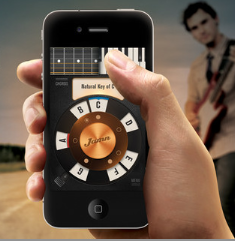By Alex Horowitz
Welcome to the internet, Spotify!
That’s right, at long last, it’s in beta, but it’s here (for some of us) — a webapp version of the music streaming service Spotify. It took being beaten to the punch by Rdio, MOG, Rhapsody, Pandora, etc. but it finally happened: Spotify, meet the web. Web, Spotify.
Gut Reaction
It’s slick, if safe. It’s a bit confusing, if only at first. It basically works, if only well enough for beta.
It’s here, and I’m glad.
Deeper Dive
Upon opening the webapp it becomes clear fairly quickly that this is a bit more complicated than a cut-and-paste of the desktop app onto a website. Let’s take a quick tour through Spotify’s web-based experience:
Design
While looking for a word to describe the look and feel of the webapp, the word that most consistently came to mind was safe. Spotify clearly borrowed its favorite bits from those that came before them, and what resulted was sort of the HTML5 ambition of Pandora mixed with the style of Rdio.
Is that a bad thing? Absolutely not. To be crystal clear, I kind of like the design.
That said, they certainly didn’t push any boundaries. The quality of the app’s look and feel is on par with the level you would expect from the leader in music streaming — it’s slick, it’s smooth, and it’s fairly devoid of any pleasant surprises.
User Experience
Using the app really is not very complicated, but it does take some getting used to.
After a bit of playing around you’ll eventually realize that navigating the searching and browsing experiences takes place on the left side of your screen, and managing what you’re hearing at the moment takes place to the right.
The left side of your screen is fairly straightforward. The right…not so much.
Clicking on the image of the album or playlist you’re currently listening to (right side of your screen) slides, from right to left, an expanded view of the album or playlist, featuring the tracks on the album and other albums you might enjoy by the same artist. While it would seem to follow that clicking on the album art again, either where you clicked on it the first time or the second smaller album art that resulted from opening the album details, would close the expanded view, such is not the case. In reality, you have to find some unused real estate elsewhere on the page and simply click there to close the tray. Not complicated once you get the hang of it, just not what I was expecting.
What’s a bit more confusing is that you can open up more than one tray at a time. You can always close one tray at a time, but again, it’s not always immediately intuitive how.
Share buttons for the music you’re listening to are tucked away in a drop-down menu that only appears once you hover over the album art on the right hand side of your screen. Again, once you know where it is, it’s fine — but for a while I didn’t, and it was a bit frustrating.
That’s really this app’s user experience up and down — everything is somewhere, you just have to commit to finding it the first time if you want to fully enjoy the experience of using it in the future.
Syncing
Well, not quite everything is somewhere. For those hoping to manage your favorite music device with the webapp, please prepare for disappointment. So far such functionality has apparently not been built out for the beta at least.
Bugs
So far the app has only crashed on me once, and for all I know that was my browser’s fault. What’s more apparent in using the app so far is that my (admittedly pretty huge) starred playlist has yet to fully render with a complete list of all the music I’d put in there. I can find all the same music by searching for it, but sometimes I just like to shuffle through the playlist of all my favorites. Online, that’s not easy to pull off at the moment.
All that said, I can’t stress enough that I am reviewing a beta. I love Spotify, and I have faith that these issues will be resolved soon.
(Side note: Feel free to sound off in the comments if you’re reading this after the beta tag has been removed and keep us up to date on how these bugs are resolving themselves. I’ll be sure to check back myself as often as I can. What can I say, I’m a Spotify junkie.)
Conclusion
Spotify should have had a webapp long ago, and when it finally came I should have been running down the streets of New York screaming about how Spotify just changed the game. That’s what industry leaders do for their biggest fans, right? Rdio, Pandora, MOG, they’re all playing catch up to Spotify in terms of adoption and cache; and yet, here we are, slowly realizing that Spotify’s got nothing on the web-based experience of their competitors. Their offering is far from bad (seriously, I do like it!) but it’s not enough to be a reason to pick Spotify over any other streaming service.
Fortunately for Spotify, that’s not the point.
The point is that Spotify, whatever the reason might be, is the industry leader in music streaming. And now, it (almost) has a webapp. Soon it will also have a properly functioning webapp, (I can’t stress enough that this is beta country.) It won’t blow your mind in terms of new features or revolutionary design – which, again, I do like – but it exists. Bugs aside, it’s solid, and that’s a very good thing for a tech nerd with a Spotify subscription like yours truly.


















Comments are closed.